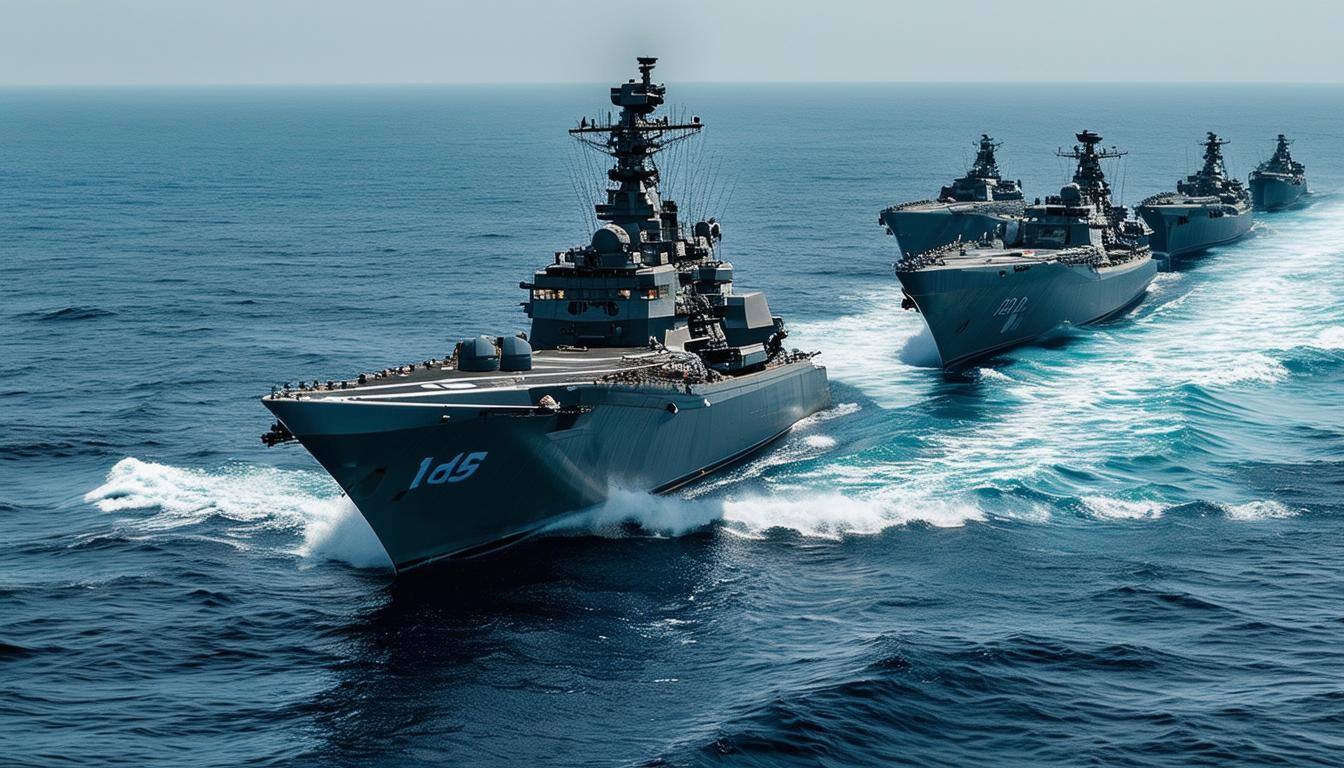India's recent emergence as a significant maritime player highlights its evolving military strategy, particularly in the Indian Ocean.
Traditionally recognized for its economic and political complexities, India is now increasingly viewed through the lens of its military capabilities, especially in humanitarian assistance, disaster relief, counterterrorism, and anti-piracy operations. Following violent border clashes with China four years ago, India maintains a strong military presence along its 3,500-kilometer Himalayan border, while also participating in multinational military exercises and naval deployments.
The global perspective on India’s military capacities has shifted, driven in part by its strategic alignment with the U.S. in the Indo-Pacific region to counter China’s influence. India is an active member of alliances such as the Quad, which includes the U.S., Japan, and Australia, while simultaneously being a founding member of BRICS and the Shanghai Cooperation Organisation. This dual approach allows India to balance its relationships, retaining robust defense ties with Russia—historically its largest military supplier—even amidst geopolitical tensions following Russia's invasion of Ukraine.
Amid global distractions, particularly concerning the Middle East and the Ukraine conflict, India has taken proactive measures to secure the Indian Ocean's sea lanes. Since December 2023, the Indian Navy has been actively patrolling the Arabian Sea and Gulf of Aden with 21 warships, drone units, and maritime surveillance aircraft, paralleling U.S. naval operations in the region. This increased naval presence reflects a significant evolution in India's maritime strategy, which has transitioned from a focus on trade to a broader concern for national security, particularly regarding energy routes and regional stability.
India's maritime strategy emphasizes its role as a net security provider and first responder in humanitarian crises, a role it has cultivated since its initial anti-piracy operations in 2008. The Indian Navy's involvement during the COVID-19 pandemic and its responses to disasters, such as the landslides in Papua New Guinea, further solidify its credentials as a preferred security partner in the region. Moreover, India’s strategic geographic location—at the intersection of various Asian regions—positions it as a crucial player in securing its maritime interests.
Despite its ambitions, India faces challenges rooted in its historical focus on land-based security due to tensions with Pakistan and China. This has led to a lag in naval capabilities relative to rising maritime threats, particularly from China, which has expanded its influence across the Indian Ocean through initiatives like the Belt and Road Initiative (BRI) and dual-use port developments in neighboring countries.
India's strategic response includes enhancing maritime capacity among its island neighbors and fostering security collaborations, exemplified by infrastructure projects in Mauritius and access agreements in Oman. However, India’s defense spending remains constrained, primarily focused on personnel costs rather than the modernization of military equipment. As a result, while India ranks among the top military spenders, its capabilities are insufficient compared to China, which has significantly increased its military budget.
The current trajectory suggests India will continue its reactive approach to military procurement, particularly if provoked by China. However, a shift toward strategic planning in defense spending and capability building may occur if Chinese incursions escalate or if Sino-Russian ties deepen significantly. Ultimately, for India to transition from a regional to a global power, it must integrate military considerations into its foreign policy and invest significantly in enhancing its military capabilities.
In summary, as India positions itself as a pivotal maritime security provider, its strategies reflect a complex balancing act between regional ambitions, historical legacies, and emerging geopolitical realities. For further details, refer to the full analysis from experts in the field.
Source: GIS Reports





